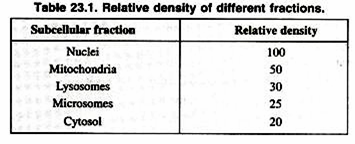In this article we will discuss about the thallus structure of polysiphonia with the help of suitable diagrams.
The thallus is filamentous, red or purple red in colour. The thallus is multi-axial and all cells are connected by pit connections hence, the name given is Polysiphonia. Due to continuous branching and re-branching the thallus has feathery appearance (Fig. 1A). The thalli may reach the length of about 30 cm.
The thallus is heterotrichous and is differentiated into a basal prostrate system and erect aerial system.
The prostrate system (Fig. 1B) creeps over the substratum. Its functions are attachment of the thallus to the substratum and perennation. In many species of Polysiphonia e.g., in P. nigrescens, the prostrate system is well developed and multi-axial in structure. In some species e.g., in P. elongata and P. violacea the multi-axial prostrate system is absent.
The plants remain attached to the substratum by:
(a) Unicellular richly branched rhizoids arising from multi-axial prostrate system.
(b) Rhizoids arising from the erect system, forming, an attachment disc or hapteron.
(c) By the unicellular rhizoids arising in groups from the prostrate system e.g., P. fastgata. The erect aerial system arises from the prostrate system. It is made of multi-axial branched filaments. The main axis and long branches have similar structure.
These are made of a central large filament or central siphon of cylindrical cells. The central siphon is surrounded by a number of pericentral cells or pericentral siphons (Fig. 2 A, B). The number of pericentral siphons varies from species to species. The length of central and pericentral siphons is equal hence, the filaments appear to be divided in nodes and internodes like.
Each pericentral siphon remains connected with central siphons through pit connections. The successive central siphon cells and all peripheral cells are also connected to each other through pit connections. Hence the complete thallus makes a polysiphonaceous structure (Fig. 2 C).
Branching:
The thallus of Polysiphonia bears two types of branches (a) Short branches (b) Long branches. The branches are lateral and monopodial. The branching starts from the cell lying 2-5 cells below the apical cell.
(A) Short Branches or Trichoblasts:
The short branches or trichoblasts are branches of limited growth. These are uniaxial in structure and lack pericentral siphons. The cells are connected to each other by pit connections. These branches arise on main axis and on long branches in spiral manner. Their cells contain very few chromatophores.
These branches are deciduous, perennial species shed these branches before winter and develop again in spring season. The basal cell of the last trichoblast is retained as scar cell by the pericentral siphon.
Development of Trichoblast:
The trichoblast initial is differentiated from a cell 2-5 cells below the apical cell (Fig. 3 A, B). It starts as a small cell and divides repeatedly to form dichotomously branched, uniseriate multicellular hair like trichoblast (Fig. 4 C, D). The trichoblast may bear male and female reproductive structures or remain sterile.
(B) Long Lateral Branches:
The long lateral branches are branches of unlimited growth are polysiphonous at the base and monosiphonous in terminal parts. These branches develop from the basal cells of short branches. In species like P. violacea they develop as outgrowth from trichoblast initial. They develop along with trichoblast and after few divisions the trichoblasts are pushed aside so they appear to arise from trichoblast dichotomously.
The outgrowth functions as the apical cell of the Long Branch which after repeated division forms the central siphon. The central siphon later on develops pericentral siphons. In species like P. elongata the long branches arise directly from the main axis. The outgrowth develops from a cell 2-5 cells below the apical cell. The outgrowth forms central siphon and later pericentral siphon in normal way.
Cortication:
The cortical cells arise from outer pericentral cells by pericentral division. The central cells divide anticlinally and surround the pericentral cells. The cortical cells are parenchymatous in nature and form several layers. The cortical cells may be present in lower part of thallus e.g., P. mollis or throughout the thallus e.g., P. crassiuscula.


